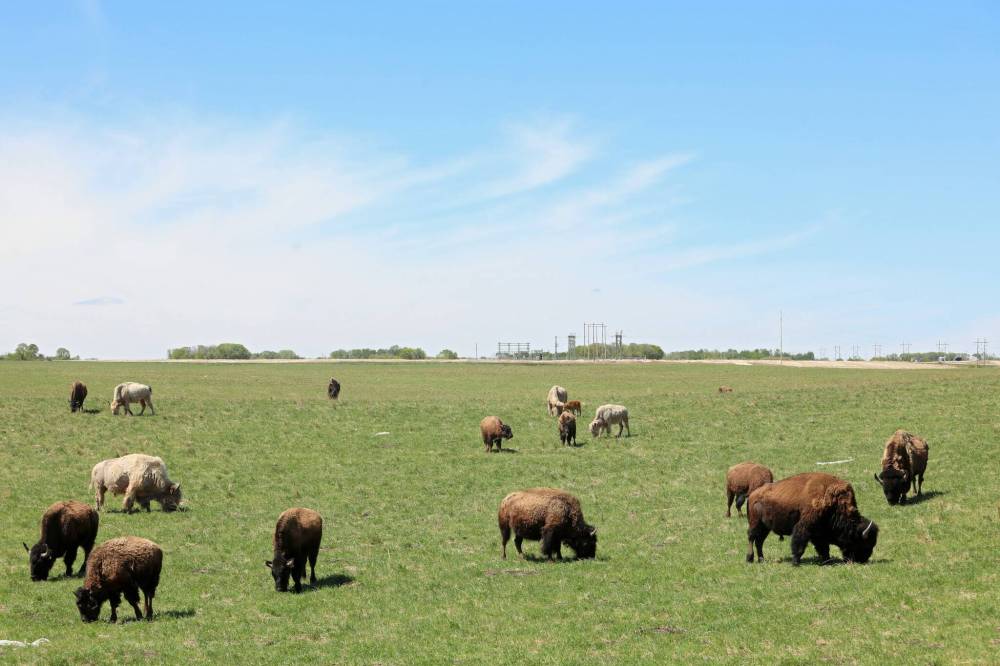Sioux Valley bringing back grassland
Advertisement
Read this article for free:
or
Already have an account? Log in here »
We need your support!
Local journalism needs your support!
As we navigate through unprecedented times, our journalists are working harder than ever to bring you the latest local updates to keep you safe and informed.
Now, more than ever, we need your support.
Starting at $15.99 plus taxes every four weeks you can access your Brandon Sun online and full access to all content as it appears on our website.
Subscribe Nowor call circulation directly at (204) 727-0527.
Your pledge helps to ensure we provide the news that matters most to your community!
To continue reading, please subscribe:
Add Brandon Sun access to your Free Press subscription for only an additional
$1 for the first 4 weeks*
*Your next subscription payment will increase by $1.00 and you will be charged $20.00 plus GST for four weeks. After four weeks, your payment will increase to $24.00 plus GST every four weeks.
Read unlimited articles for free today:
or
Already have an account? Log in here »
Hey there, time traveller!
This article was published 05/07/2023 (849 days ago), so information in it may no longer be current.
Environmental staff at Sioux Valley Dakota Nation are on a mission to return traditional native grasses to the area on the reserve.
In June, the reserve’s land advisory committee visited John Skinner of Skinner Native Seeds, who specializes in growing the traditional Prairie grasses that grew in southwestern Manitoba in the past. With his help, the committee plans to reseed pastures where bison graze, creating a rich, diverse ecosystem that will benefit not only the bison but other flora and fauna that call the Prairies home.
Sioux Valley’s lead environmentalist, Cheyenne Ironman, is working closely with gardening experts Jennifer McIvor and Ainsley Tacan, as well as with land staff, to help restore and protect the Prairie grasslands within the reserve by re-establishing the traditional diets of bison directly on Sioux Valley pastures.

Sioux Valley Dakota Nation;s bison herd graze on a sunny pasture. (File)
Sioux Valley is located 50 kilometres west of Brandon.
After European settlers came to the Prairies, they began to farm, and their practices replaced the native Prairie grasses with crops such as wheat, barley and canola. They also hunted the bison to near extinction in the 19th century.
“They were almost killed off, and obviously that changed the whole landscape,” Ironman said. “They were free roaming.”
Bison have always been sacred to the Dakota people, Ironman said, pointing to the story of the White Buffalo Calf Woman, who brought the canupa (sacred pipe) and the ceremonies that would guide the Dakota people in their roles as individuals and instruct them on how to relate to one another.
The overall health of the bison, soil quality and biodiversity that other species of plants, animals and insects depend on need to be protected and nourished with native Prairie grasses. The benefits grazing bison bring to the land also cannot be understated, Ironman said.
“They’re a critical part of the whole grassland ecosystem, for sure. The weight of the bison’s hooves … helps everything decompose and regrow faster. Their weight also aerates the soil.”
Skinner has spent the last 24 years of his life perfecting the process of turning agricultural land back into native Prairie grassland. He advised the committee to start with a three-grass blend made up of the traditional grasses that were native to the area before crops and invasive species were planted. He also showed the committee the types of equipment they can use in their seeding.
“We had a wiener roast and a visit, and since then, I’ve been back to Sioux Valley to look at the bison paddocks,” Skinner said. “It’s kind of ongoing and evolving, and hopefully, they will keep going and we’ll be able to help them with some restoration.”
Sioux Valley leadership has also issued a ban on all sprays, such as herbicides, fungicides and insecticides and the planting and growing of canola and other related crops.
Since conversion to agricultural land is one of the biggest threats to Prairie grasslands, Ironman said that was the reason the First Nation decided to terminate leases or not renew leases with producers on its land.
Currently, close to 60 per cent of the land on the Sioux Valley Dakota Nation is Prairie grasslands.
The rest of the land is made up of residential areas and buildings, marsh and wetlands. The grassland itself is made up of 65 per cent pasture land for forage, hayfield and intact grassland and 35 per cent crop land.
“It’s that 35 per cent we are aiming to restore to natural grassland,” Ironman said.
The main goals of the bison and grassland projects are to enhance biodiversity and increase the productivity of natural grasses that are optimal for bison; to identify areas of the reserve for restoration and habitat enhancement for grassland species; to decrease or remove invasive, non-native or less desirable plant species in the pasture and other areas of the community; and to inform and engage the community in decision making processes and involving youth in training.
With the help from Skinner, Agriculture and Agri-Food Canada and Birds Canada, which is helping with the project as well, Ironman hopes the situation will continue to improve. It will, however, take dedicated time and effort, she added.
Eventually, Sioux Valley hopes to be able to supply bison meat to community members on a regular basis.
“It’s the best thing that’s available to our people because it’s leaner than beef. Its healthier, and it’s just a lot better for people. We can return to our own traditional diets and everything,” Ironman said.
» mleybourne@brandonsun.com
» Twitter: @miraleybourne
